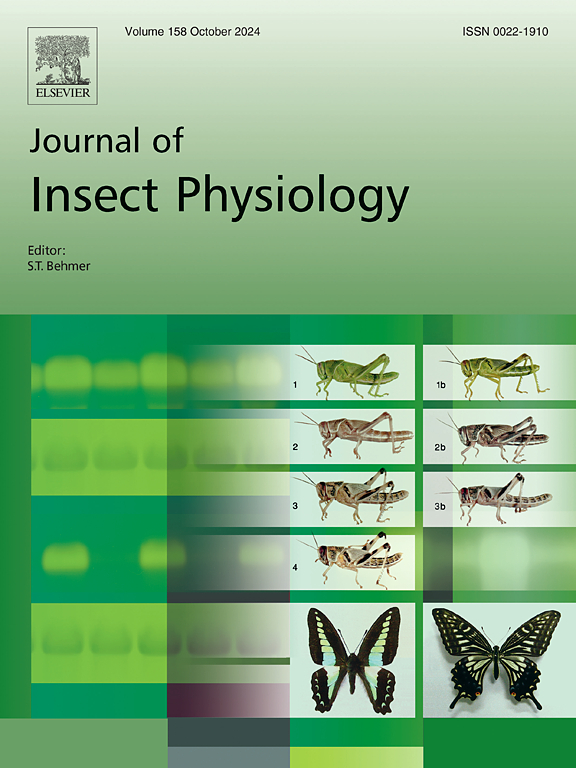屎壳郎的功能性腿设计:对食物迁移行为的形态适应。
IF 2.3
2区 农林科学
Q1 ENTOMOLOGY
引用次数: 0
摘要
屎壳郎是一种食粪昆虫,以脊椎动物的粪便为食并繁殖。对同一短暂食物来源的依赖导致个体之间频繁接触,从而导致激烈的竞争。因此,进化出了不同的食物迁移策略(水平和垂直),这对四肢的功能形态造成了不同的压力,这取决于粪便是被卷成球、碎片携带还是直接拖进地下洞穴。先前的研究表明,特定腿节的大小和形状对这些行为有一些非常基本的适应。然而,腿部形态与不同食物定位技术的功能之间的确切关系至今仍未被探索,这也是本研究的目的。因此,我们研究了三种屎壳郎的腿部功能形态:stercorosus Anoplotrupes(鞘翅目:土虻科)、Scarabaeus (Kheper) lamarcki和galenus(鞘翅目:金龟子科)。我们的研究结果表明,在腿部关节的开口角度以及非常基础的髋节的方向上有很大的差异。因此,我们的发现揭示了蜣螂显著的生物力学适应性,揭示了腿形态与食物迁移策略的关系。了解这些适应性不仅提高了我们对屎壳郎生物学的认识,而且还提供了对腿结构的新见解,可能会启发仿生机器人。本文章由计算机程序翻译,如有差异,请以英文原文为准。

Functional leg design in dung beetles: Morphological adaptations to food relocation behavior
Dung beetles are coprophagous insects that reproduce and feed on vertebrate faeces. The dependency on the same ephemeral food source leads to frequent contact between individuals and thus intense competition. As a consequence, different strategies of food relocation (horizontal and vertical) have evolved, that put different stresses on the functional morphology of the extremities depending on whether dung is rolled as a ball, carried in fragments or dragged directly into the underground burrow. Previous studies have indicated some very basic adaptations in size and shape of specific leg segments to those behaviors. However, the exact relationship between the leg morphology and the functionality for different food relocation techniques mainly remains unexplored to date and represents the aim of the present study. We therefore explore the leg functional morphology of three dung beetle species: Anoplotrupes stercorosus (Coleoptera: Geotrupidae), Scarabaeus (Kheper) lamarcki and Scarabaeus galenus (Coleoptera: Scarabaeidae). Our results reveal that there are strong differences in the opening angles of the leg joints as well as the orientation of the very basal coxa segment. Our findings thus reveal significant biomechanical adaptations in dung beetles, shedding light on how leg morphology correlates with food relocation strategies. Understanding these adaptations not only enhances our knowledge of dung beetle biology, but also provides new insights in the leg construction that may inspire bio-inspired robotics.
求助全文
通过发布文献求助,成功后即可免费获取论文全文。
去求助
来源期刊

Journal of insect physiology
生物-昆虫学
CiteScore
4.50
自引率
4.50%
发文量
77
审稿时长
57 days
期刊介绍:
All aspects of insect physiology are published in this journal which will also accept papers on the physiology of other arthropods, if the referees consider the work to be of general interest. The coverage includes endocrinology (in relation to moulting, reproduction and metabolism), pheromones, neurobiology (cellular, integrative and developmental), physiological pharmacology, nutrition (food selection, digestion and absorption), homeostasis, excretion, reproduction and behaviour. Papers covering functional genomics and molecular approaches to physiological problems will also be included. Communications on structure and applied entomology can be published if the subject matter has an explicit bearing on the physiology of arthropods. Review articles and novel method papers are also welcomed.
 求助内容:
求助内容: 应助结果提醒方式:
应助结果提醒方式:


